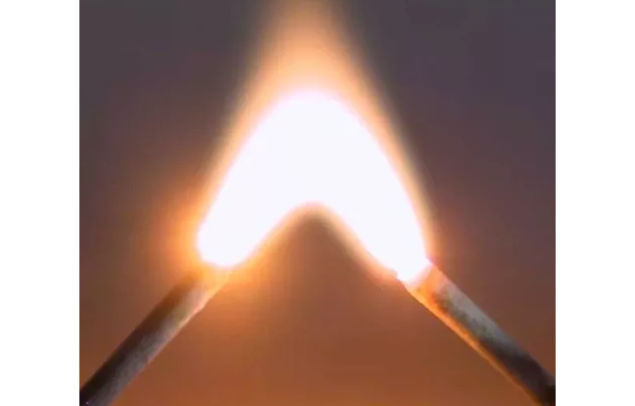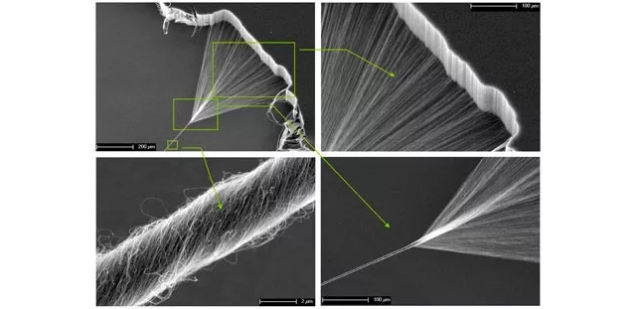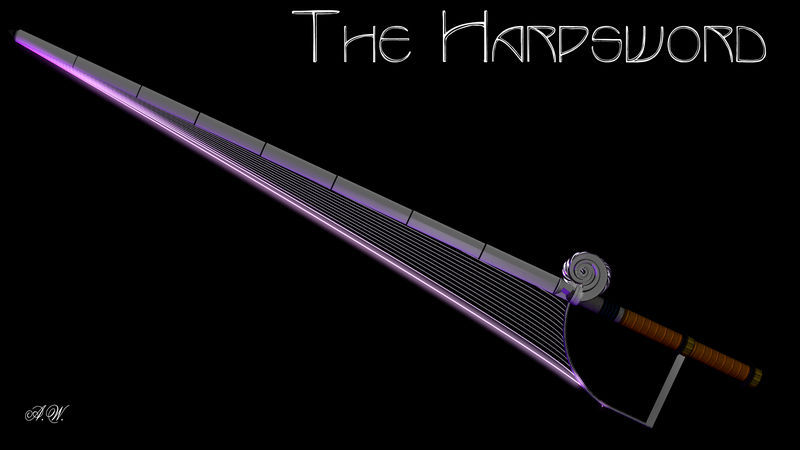Is it possible to create a lightsaber from the point of view of modern science?
- Transfer

Thanks to the extensive technical description created by the scriptwriters, we have a pretty good idea of how a lightsaber can be arranged. And for several decades, millions of fans of the Star Wars universe have been dreaming of creating such a technology. Let's see in what approximation modern science allows us to create weapons a la lightsaber?

This is what an “original” lightsaber looks like in a section.
First, let's figure out how the Jedi lightsaber works. Despite the name, the beam of this weapon does not consist of light. This is an erroneous term (if one can speak of erroneousness in this case) of the same order as the “shooting star” as applied to meteor bodies burning in the Earth’s atmosphere. Poetic, but nothing more. The most correct description of the principle of operation of a lightsaber is the following: a plasma arc is created, which, using a magnetic field and a focusing crystal, is “stretched” and held in the form of a long thin line. But you need to keep in mind that something very similar to the force used by the Jedi and Siths to manipulate physical objects is involved.
As an illustration from real life, we can give this electric arc, which changes its shape under the influence of a magnetic field during music playback:
Another example of an arc:

It is quite possible to imagine how this arc is "taken" in the middle and stretched about a meter, turning into a "blade" of the sword. Although in reality this is a very difficult task, we will come back to this.
Today we are already using technologies that are very close to the above description of the principle of the lightsaber. For example, in machines for cutting metal at factories around the world, a “beam” of superhot plasma (up to 40,000 degrees) is used.

This diagram shows a plasma cutter device, and it is similar to how a lightsaber can be arranged. Unfortunately, the similarity ends here. The arc formed is very small (in the diagram it is indicated by a blue line). It ignites a gas under pressure, which acts as a coolant, diverting arc energy to the outside.
The main "drawback" of the plasma torch, from the point of view of our task, is the very small size of the arc. In the best case, it can be “stretched” to 12-15 cm. In addition, these devices consume a huge amount of electricity. The torch nozzle must be constantly cooled with running water, otherwise it will melt very quickly. In some cutters, the gas stream acts as a cathode, and the cut surface acts as an anode. As a result, the plasma arc is relatively long and extended outside the apparatus. But in any case, such a plasma torch cannot be used as a weapon. If only because first you have to connect a high voltage cable to your opponent.
So far, we do not have technology that allows us to extend and hold the arc using a magnetic field. Even if you pull it out from a hypothetical handle, it will be unstable, constantly deviating to the sides in a random order, trying to “stick” to the nearest surface.
In addition, since the arc will be an extremely elongated loop, branches located at a short distance from each other will simply merge and the arc will shorten again. But even if we somehow solve both of the problems described, we still have different ones: a powerful heat loss and the intangible, so to speak, nature of the arc, that is, with its help it is impossible to block or counter the strike of the enemy’s weapons.
Another way
Probably worth thinking in a completely different direction. So, our task is to create a hand weapon capable of cutting various materials, having a luminous “retractable” blade. To date, the closest option theoretically available to us is a string of several threads consisting of carbon nanotubes. The cutting ability of the string can be imparted using a pulsating electromagnetic field and / or plasma. This kind of “energetic vibro-sword” in its design will resemble a bow, because you need to somehow stretch this wire. Otherwise, you get a whip, not a sword.

To ensure the "extendability" of the blade, you may need to make the rigid part of the blade telescopic, and place the wire in the form of a coil in the handle. To ensure high mechanical strength, the telescopic part can also be made of carbon nanotubes. The stiff part of the blade will be thin enough to pass through the cut material after the red-hot wire, and at the same time thick enough to withstand the blow of the enemy’s weapons.
To maximize the life of the cutting wire and reduce heat loss, you need to apply energy immediately before contact with the cut surface, sending a pulse from the handle to the tip. The filaments forming the wire will gradually wear out as the charge passes from the outer layers of the wire to the core. As a result, the effect of constant ablation will be observed, which will require regular updating of the wire, because it will be very thin. The thinner it is, the higher the cutting ability of the weapon will be.
The energy source will still be very large, perhaps it will have to be carried in a backpack. It will be necessary to solve the problem of thermal insulation of the handle, including by forcedly limiting the time of continuous operation. Given the very high brightness of the glow of a hot wire, you will need to use special light-protective glasses. If we are already talking about using the most advanced achievements of science, then glasses can also be more than just optical filters. Perhaps it would be advisable to use smart glasses. Being completely transparent during normal wear, they will dynamically darken or make opaque only a small area of the field of view, sufficient to cover the glowing radiant wire.
Here so, as a result, the described "energy vibro-sword" might look like:

And what more or less accessible (or promising) technologies would you suggest using for such a hand weapon?
